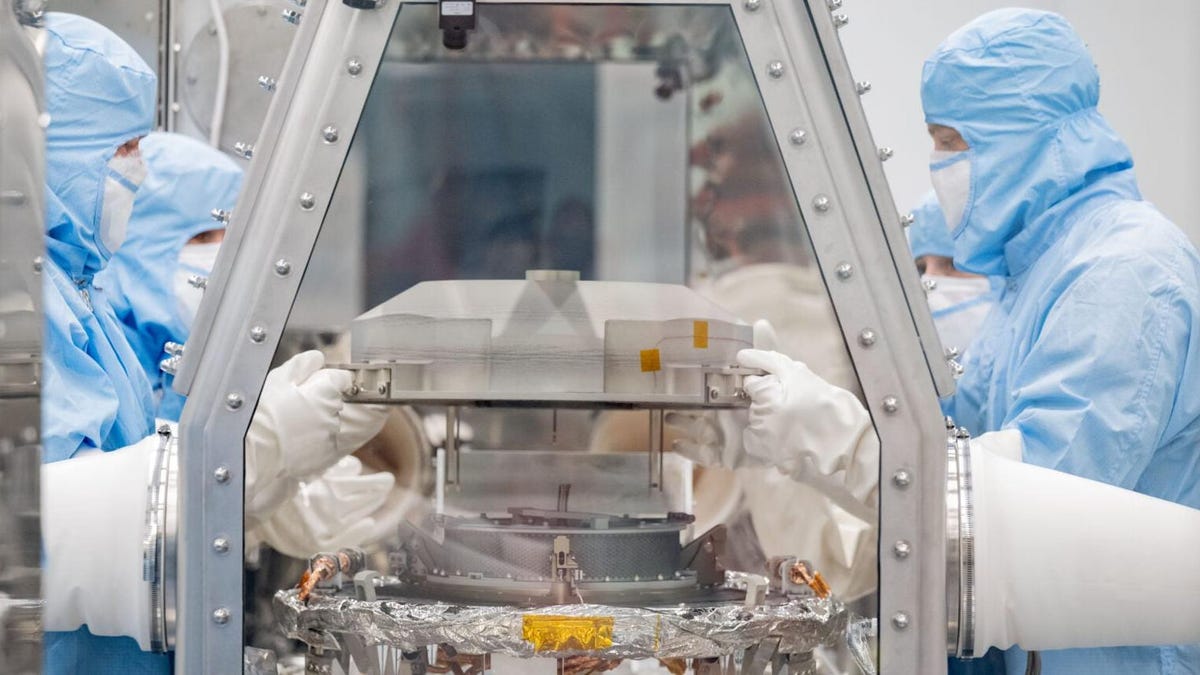
Following a nearly three-year journey through space, the canister containing samples from asteroid Bennu has finally been opened.
The OSIRIS-REx mission team removed the initial lid of the sample canister, which was placed inside a glovebox to keep out contaminants, on Tuesday at NASA’s Johnson Space Center in Houston, the space agency announced. Once the aluminum lid was removed, scientists found black dust and debris on the avionics deck of the canister. Although NASA didn’t elaborate on the source of the debris, it most likely came from Bennu itself when the spacecraft landed on the asteroid and snagged its rocky sample in October 2020.
Advertisement
NASA’s OSIRIS-REx spacecraft dropped off the asteroid samples in the Utah desert on Sunday, from where it was airlifted to a clean room. From there, the clean room team packaged all the parts of the sample capsule for transport by aircraft to the Johnson Space Center on Monday morning.
At the space center, NASA designed a new laboratory specifically for the OSIRIS-REx mission. A team will disassemble the canister to get to the bulk of the sample inside, an estimated 8.8 ounces (250 grams) of asteroid rock and dust.
Advertisement
Advertisement
Following the disassembly process, researchers will analyze the asteroid dust “for an early glimpse into the chemical, mineralogical, and physical characteristics and rock types that may be found in the bulk sample,” according to NASA. The early findings from the sample, in addition to some images of the rocks and dust, will be revealed during a live broadcast on October 11 at 11:00 a.m. ET.
The OSIRIS-REx mission launched in September 2016 and reached asteroid Bennu in December 2018. After nearly two years of observations, the spacecraft landed on Bennu and snagged a sample from its surface. On May 10, 2021, OSIRIS-REx began its journey back home to drop off its precious cargo.
Bennu is a small, near-Earth asteroid that makes a close pass to Earth every six years or so. Scientists believe Bennu might have broken off from a much larger carbon-rich asteroid about 700 million to 2 billion years ago, and drifted much closer to Earth since then.
For more spaceflight in your life, follow us on Twitter and bookmark Gizmodo’s dedicated Spaceflight page.
Services Marketplace – Listings, Bookings & Reviews